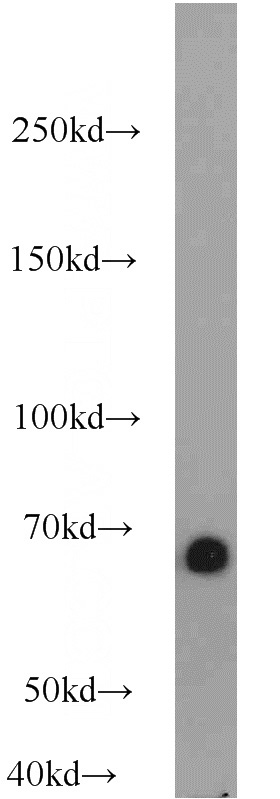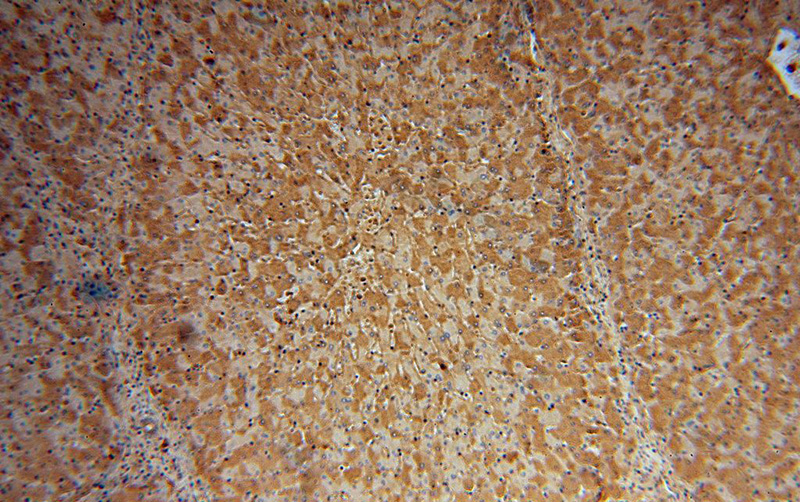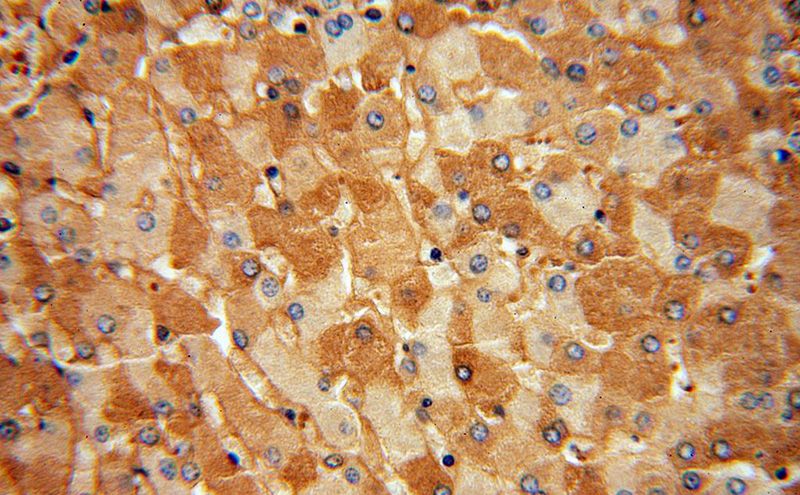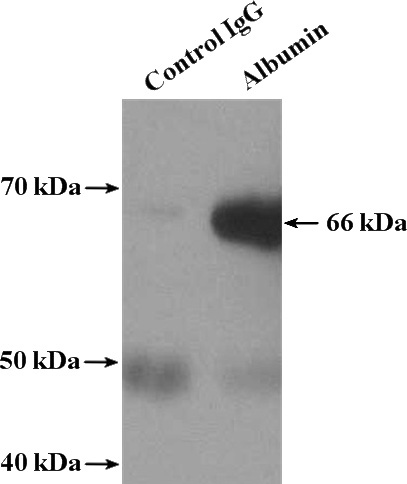-
Product Name
Albumin antibody
- Documents
-
Description
Albumin Rabbit Polyclonal antibody. Positive IHC detected in human liver tissue, human heart tissue, human liver cancer tissue, human spleen tissue. Positive WB detected in human blood tissue, mouse liver tissue, mouse serum tissue. Positive IP detected in human plasma tissue. Observed molecular weight by Western-blot: 66 kDa
-
Tested applications
ELISA, WB, IHC, IP
-
Species reactivity
Human,Mouse,Rat; other species not tested.
-
Alternative names
ALB antibody; albumin antibody; DKFZp779N1935 antibody; GIG42 antibody; HSA antibody; PRO0883 antibody; PRO0903 antibody; PRO1341 antibody; PRO1708 antibody; PRO2044 antibody; PRO2619 antibody; PRO2675 antibody; Serum albumin antibody; UNQ696/PRO1341 antibody
-
Isotype
Rabbit IgG
-
Preparation
This antibody was obtained by immunization of Albumin recombinant protein (Accession Number: NM_000477). Purification method: Antigen affinity purified.
-
Clonality
Polyclonal
-
Formulation
PBS with 0.02% sodium azide and 50% glycerol pH 7.3.
-
Storage instructions
Store at -20℃. DO NOT ALIQUOT
-
Applications
Recommended Dilution:
WB: 1:5000-1:50000
IP: 1:5000-1:50000
IHC: 1:20-1:200
-
Validations

human blood tissue were subjected to SDS PAGE followed by western blot with Catalog No:107955(ALB antibody) at dilution of 1:10000

Immunohistochemical of paraffin-embedded human liver using Catalog No:107955(ALB antibody) at dilution of 1:100 (under 10x lens)

Immunohistochemical of paraffin-embedded human liver using Catalog No:107955(ALB antibody) at dilution of 1:100 (under 40x lens)

IP Result of anti-Albumin (IP:Catalog No:107955, 4ug; Detection:Catalog No:107955 1:10000) with human plasma tissue lysate 4000ug.
-
Background
Albumin is the most abundant protein in blood plasma. Alterations of level of serum albumin are linked to variety of diseases. Albumin is expressed exclusively by well-differentiated hepatocytes, thus anti-albumin has been used to mark hepatocytes. (21388516, 23832071)
-
References
- Wang Z, Liu F, Tu W. Embryonic liver fodrin involved in hepatic stellate cell activation and formation of regenerative nodule in liver cirrhosis. Journal of cellular and molecular medicine. 16(1):118-28. 2012.
- Li J, Liu K, Liu Y. Exosomes mediate the cell-to-cell transmission of IFN-α-induced antiviral activity. Nature immunology. 14(8):793-803. 2013.
- Zhou M, Zhao F, Li J. Long-term maintenance of human fetal hepatocytes and prolonged susceptibility to HBV infection by co-culture with non-parenchymal cells. Journal of virological methods. 195:185-93. 2014.
- Mauvoisin D, Wang J, Jouffe C. Circadian clock-dependent and -independent rhythmic proteomes implement distinct diurnal functions in mouse liver. Proceedings of the National Academy of Sciences of the United States of America. 111(1):167-72. 2014.
- Pan X, Wang P, Luo J. Adipogenic changes of hepatocytes in a high-fat diet-induced fatty liver mice model and non-alcoholic fatty liver disease patients. Endocrine. 48(3):834-47. 2015.
- Zhou M, Huang Y, Cheng Z. Revival, characterization, and hepatitis B virus infection of cryopreserved human fetal hepatocytes. Journal of virological methods. 207:29-37. 2014.
- Tian H, Wang L, Cai R, Zheng L, Guo L. Identification of protein network alterations upon retinal ischemia-reperfusion injury by quantitative proteomics using a Rattus norvegicus model. PloS one. 9(12):e116453. 2014.
- Wang J, Wang S, Li M. The Neuropilin-1 Inhibitor, ATWLPPR Peptide, Prevents Experimental Diabetes-Induced Retinal Injury by Preserving Vascular Integrity and Decreasing Oxidative Stress. PloS one. 10(11):e0142571. 2015.
Related Products / Services
Please note: All products are "FOR RESEARCH USE ONLY AND ARE NOT INTENDED FOR DIAGNOSTIC OR THERAPEUTIC USE"
